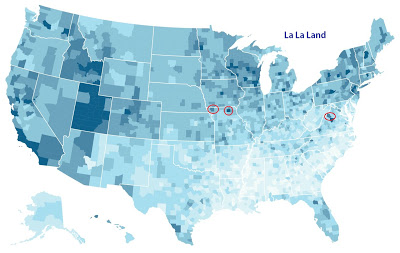When we see individuals holding cardboard signs and asking for spare change wearing camouflage, homelessness among veterans can seem like an epidemic. Recently, however, government efforts to reduce veteran homelessness have had great success. In response to a federal strategy known as Opening Doors, since 2010 veteran homelessness has declined by almost 50%. And in that time period some cities, such as New Orleans, have reported veteran homelessness at functional zero.
You would never know it from social media. As the world has grappled with the Syrian civil war, political memes have emerged in the U.S. that make the case that we should prioritize homeless veterans over Syrian refugees. These memes foreground a competition between homeless veterans and Syrian refugees in order to make a misleading, emotionally-appealing argument against the resettlement of Syrian refugees.

Deliberately or not, the online images are similar to propaganda. Actors create emotionally-charged illustrations with biased and one-sided evidence to encourage a political point. The memes push a narrative of homeless veterans as overlooked by the government, while this goes against the facts. They also suggest a fallacious argument that the Department of Veterans Affairs will lose funds because of the refugee resettlement program. This is not the case.
At the same time the memes appeal to our sentiments. Features writer for Mashable, Rebecca Ruiz, contends that memes like these pose the emotional question, “If people in the U.S. are suffering, why are we helping refugees?” What if veterans are those slighted? This is a powerful idea because Americans revere veterans.
In Coming Home: Attitudes toward U.S. Veterans Returning from Iraq, sociologists Alair MacLean and Meredith Kleykamp argue that male veterans involved in recent military-related combat are still supported by the general public, even in light of the idea that those exposed to combat have mental health issues and substance abuse problems. They add that veterans are privileged by symbolic capital, or prestige related to their service. A meme that presents veterans as treated unfairly is likely to produce an emotional reaction, something that is known to simplify our thinking and decision-making.
While the digital messages premised on helping veterans are compelling, they are false and a strategic exploitation of our feelings, one with xenophobic, white nationalist, and anti-immigrant goals. They urge us to advocate against Syrian resettlement to solve an unrelated problem that is already diminishing.
Ian Nahan has a Bachelor’s of Arts degree in both sociology and social work. He plans on working with veterans once he obtains a master’s degree in social work at the University of Pennsylvania.








 We may be more connected through Mario, but that connection takes place within a global capitalist economy. In fact,
We may be more connected through Mario, but that connection takes place within a global capitalist economy. In fact,  To
To 